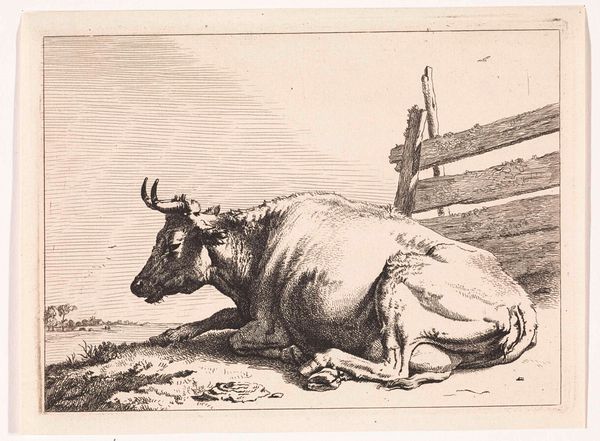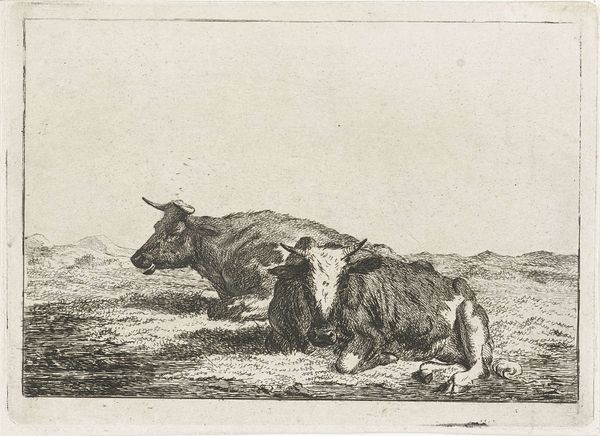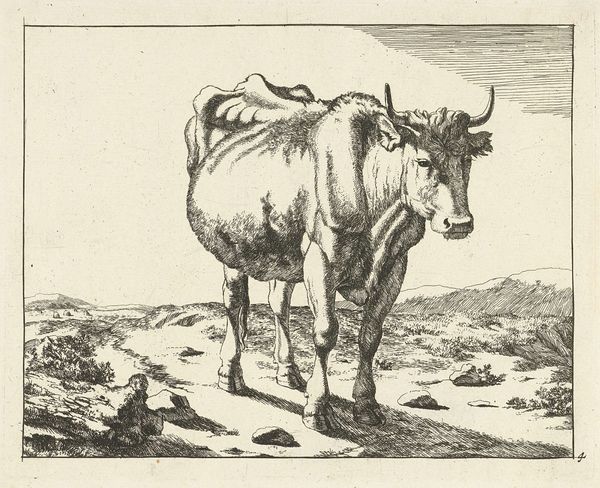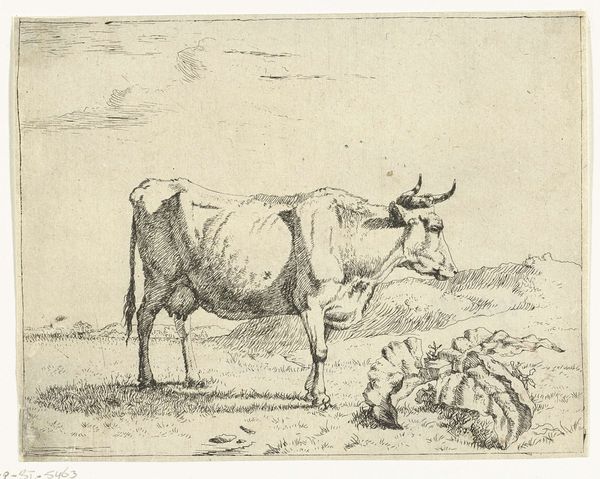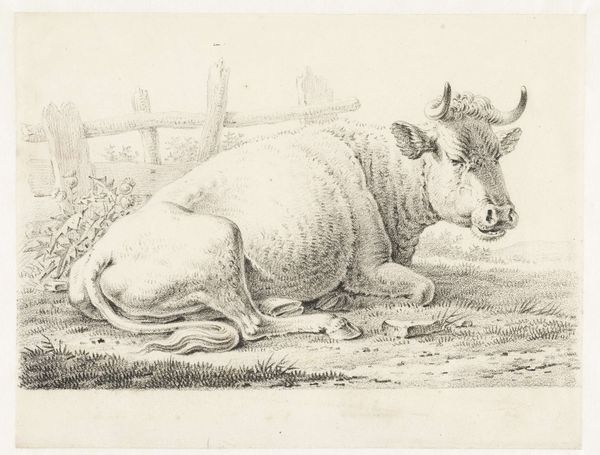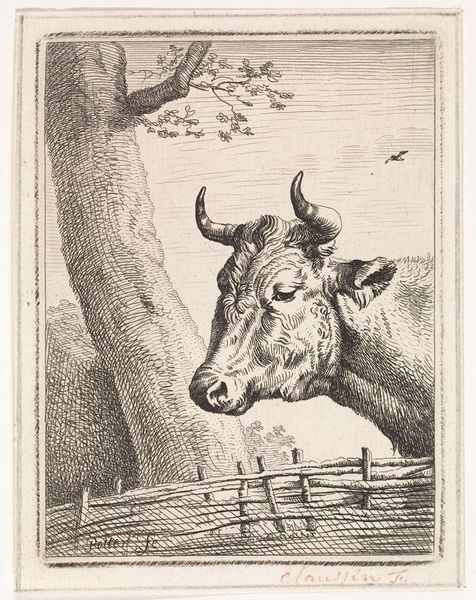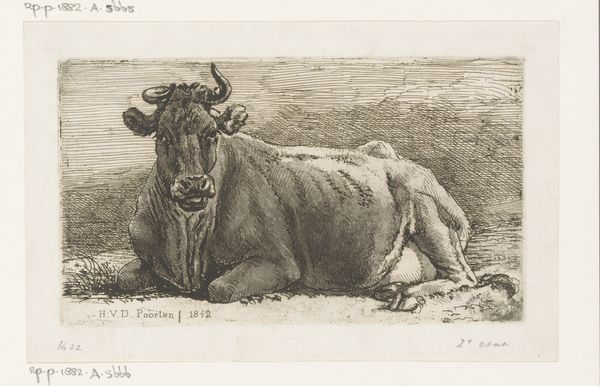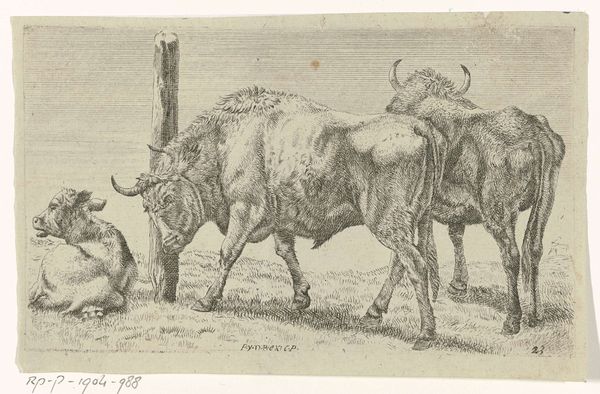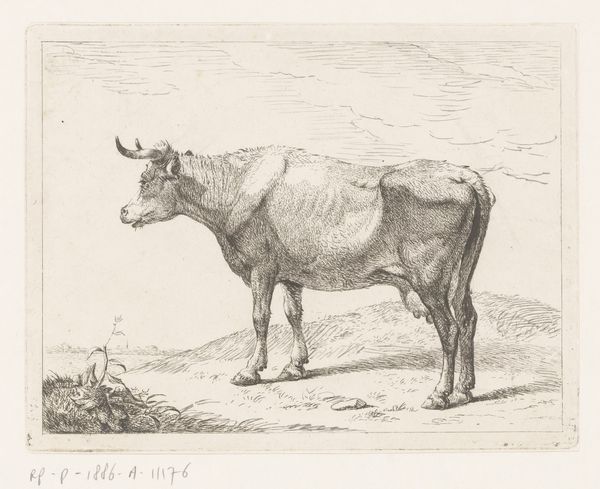
drawing, print, etching, engraving
#
drawing
#
animal
# print
#
pen sketch
#
etching
#
pencil sketch
#
landscape
#
engraving
#
realism
Dimensions: height 116 mm, width 172 mm
Copyright: Rijks Museum: Open Domain
Editor: Here we have Anthony Oberman's "Liggende koe bij een schutting", made sometime between 1810 and 1812. It's a print—etching, engraving, or something of the sort—of a cow resting next to a fence. It feels quite serene, with a definite emphasis on line and texture. What do you see in this piece, Professor? Curator: Indeed. Immediately striking is the linear precision defining the form. Note how Oberman employs hatching and cross-hatching to generate a subtle interplay of light and shadow, meticulously delineating the volume of the recumbent cow. Observe, too, how the fence acts as a rigid geometric counterpoint to the animal’s organic curves, creating a structured tension. Editor: I hadn't considered the fence as a formal element, but now I see how it frames the subject and provides a sense of depth. Is that the intention? Curator: I suggest that the intention is primarily pictorial, establishing spatial relationships and textual variation within a constrained field. Question: would the image succeed without it, in your view? Editor: I don't know if succeed is the right word, but without the fence, the animal would float, perhaps. I also see a range of techniques: tighter, finer lines for the cow and looser hatching in the sky to depict those soft clouds. Curator: Precisely. It speaks to a deliberate understanding of the possibilities inherent within the engraving medium itself. We must also appreciate Oberman's economy of means in conveying both texture – the rough wood of the fence, the animal’s hide – and atmosphere. Editor: It is all the more impressive when considering the variety of the image in terms of a structured composition! Curator: Ultimately, "Liggende koe bij een schutting" offers an object lesson in how close observation and formal rigor can transform an ordinary subject into an absorbing artistic statement. Thank you!
Comments
No comments
Be the first to comment and join the conversation on the ultimate creative platform.



